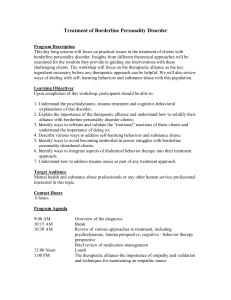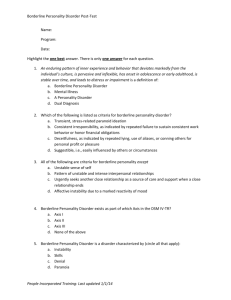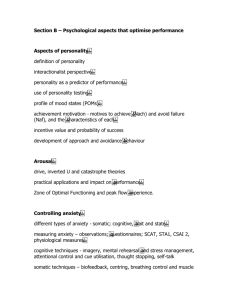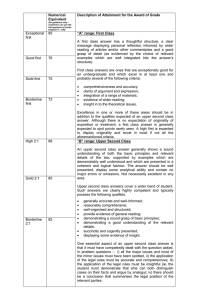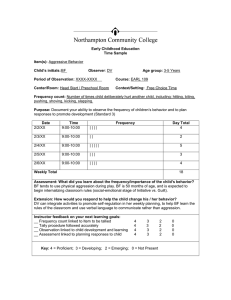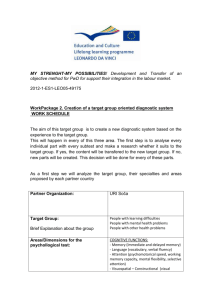The Relation Between Subtypes in Adolescent Inpatients
advertisement
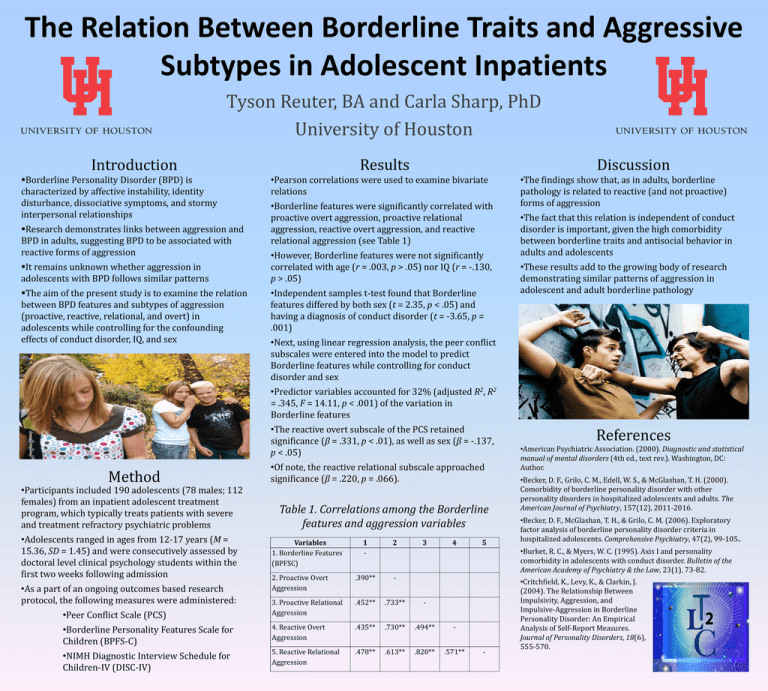
The Relation Between Borderline Traits and Aggressive Subtypes in Adolescent Inpatients Introduction Borderline Personality Disorder (BPD) is characterized by affective instability, identity disturbance, dissociative symptoms, and stormy interpersonal relationships Tyson Reuter, BA and Carla Sharp, PhD University of Houston Research demonstrates links between aggression and BPD in adults, suggesting BPD to be associated with reactive forms of aggression It remains unknown whether aggression in adolescents with BPD follows similar patterns The aim of the present study is to examine the relation between BPD features and subtypes of aggression (proactive, reactive, relational, and overt) in adolescents while controlling for the confounding effects of conduct disorder, IQ, and sex Results •Pearson correlations were used to examine bivariate relations •Borderline features were significantly correlated with proactive overt aggression, proactive relational aggression, reactive overt aggression, and reactive relational aggression (see Table 1) •However, Borderline features were not significantly correlated with age (r = .003, p > .05) nor IQ (r = -.130, p > .05) •Independent samples t-test found that Borderline features differed by both sex (t = 2.35, p < .05) and having a diagnosis of conduct disorder (t = -3.65, p = .001) •Participants included 190 adolescents (78 males; 112 females) from an inpatient adolescent treatment program, which typically treats patients with severe and treatment refractory psychiatric problems •Adolescents ranged in ages from 12-17 years (M = 15.36, SD = 1.45) and were consecutively assessed by doctoral level clinical psychology students within the first two weeks following admission •As a part of an ongoing outcomes based research protocol, the following measures were administered: •Peer Conflict Scale (PCS) •Borderline Personality Features Scale for Children (BPFS-C) •NIMH Diagnostic Interview Schedule for Children-IV (DISC-IV) •The findings show that, as in adults, borderline pathology is related to reactive (and not proactive) forms of aggression •The fact that this relation is independent of conduct disorder is important, given the high comorbidity between borderline traits and antisocial behavior in adults and adolescents •These results add to the growing body of research demonstrating similar patterns of aggression in adolescent and adult borderline pathology •Next, using linear regression analysis, the peer conflict subscales were entered into the model to predict Borderline features while controlling for conduct disorder and sex •Predictor variables accounted for 32% (adjusted R2, R2 = .345, F = 14.11, p < .001) of the variation in Borderline features Method Discussion •The reactive overt subscale of the PCS retained significance (β = .331, p < .01), as well as sex (β = -.137, p < .05) •Of note, the reactive relational subscale approached significance (β = .220, p = .066). Table 1. Correlations among the Borderline features and aggression variables Variables 1. Borderline Features (BPFSC) 1 - 2. Proactive Overt Aggression .390** 4. Reactive Overt Aggression .435** 3. Proactive Relational Aggression 5. Reactive Relational Aggression 2 - .452** .733** .478** .613** .730** 3 - .494** .820** 4 - .571** 5 - References •American Psychiatric Association. (2000). Diagnostic and statistical manual of mental disorders (4th ed., text rev.). Washington, DC: Author. •Becker, D. F., Grilo, C. M., Edell, W. S., & McGlashan, T. H. (2000). Comorbidity of borderline personality disorder with other personality disorders in hospitalized adolescents and adults. The American Journal of Psychiatry, 157(12), 2011-2016. •Becker, D. F., McGlashan, T. H., & Grilo, C. M. (2006). Exploratory factor analysis of borderline personality disorder criteria in hospitalized adolescents. Comprehensive Psychiatry, 47(2), 99-105.. •Burket, R. C., & Myers, W. C. (1995). Axis I and personality comorbidity in adolescents with conduct disorder. Bulletin of the American Academy of Psychiatry & the Law, 23(1), 73-82. •Critchfield, K., Levy, K., & Clarkin, J. (2004). The Relationship Between Impulsivity, Aggression, and Impulsive-Aggression in Borderline Personality Disorder: An Empirical Analysis of Self-Report Measures. Journal of Personality Disorders, 18(6), 555-570.

